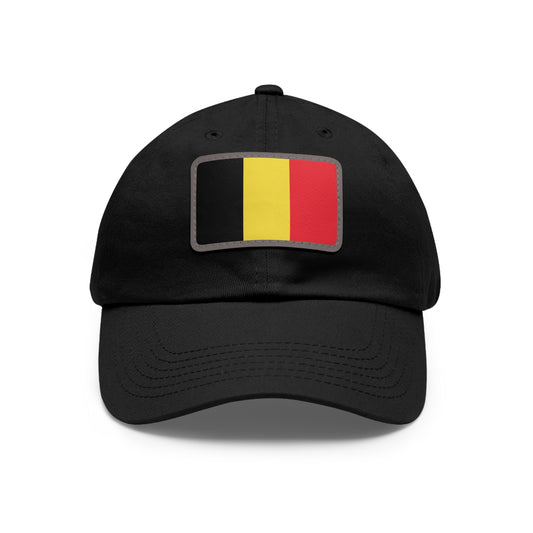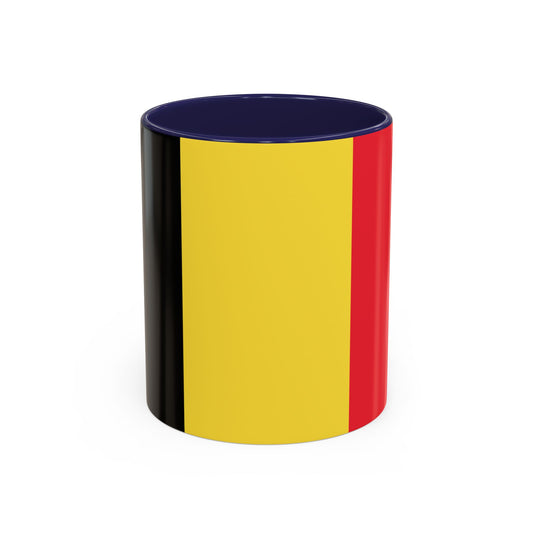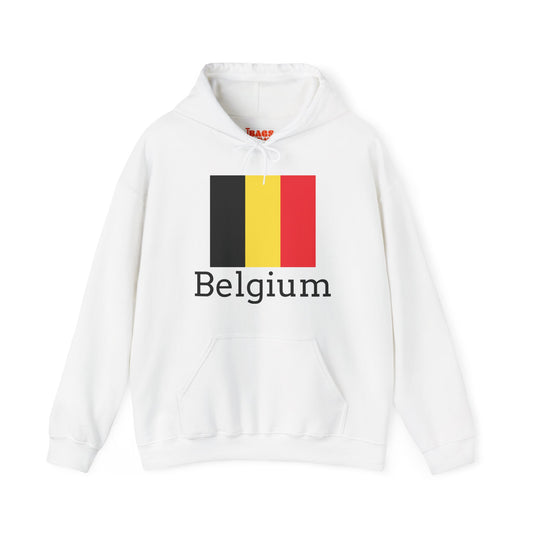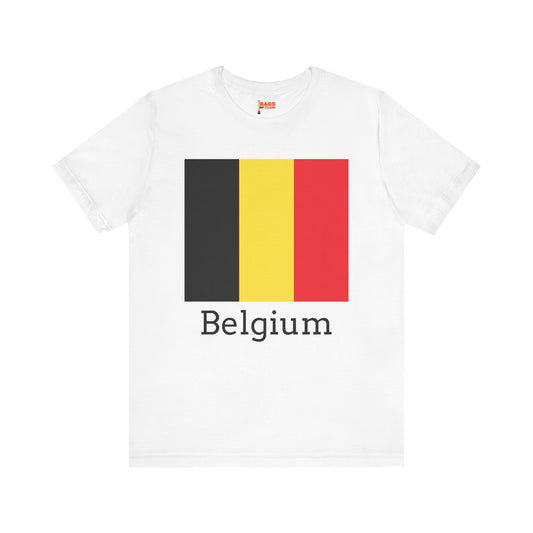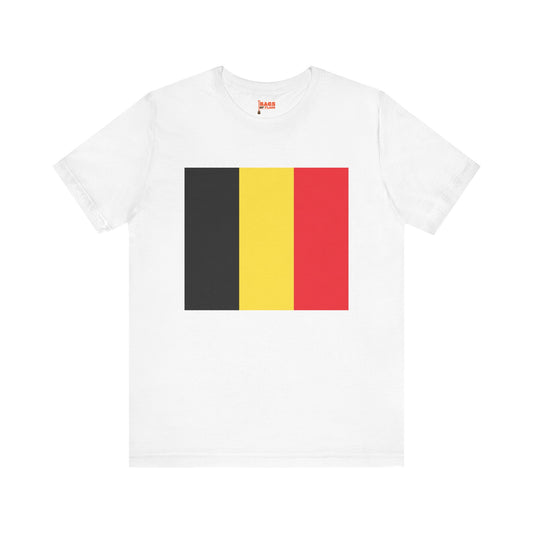-
Belgium Pillow
Regular price $22.65 USDRegular priceUnit price / per -
Belgium Backpack
Regular price $59.79 USDRegular priceUnit price / per -
Belgium Leather Patch Hat
Regular price $18.85 USDRegular priceUnit price / per -
Belgium Flag Sweatshirt
Regular price $34.15 USDRegular priceUnit price / per -
Belgium Sweatshirt
Regular price $34.15 USDRegular priceUnit price / per -
Belgium Mug
Regular price $11.65 USDRegular priceUnit price / per -
Belgium Trucker Cap
Regular price $14.90 USDRegular priceUnit price / per -
Belgium Hoodie
Regular price $34.40 USDRegular priceUnit price / per -
Belgium T-shirts
Regular price $22.79 USDRegular priceUnit price / per -
Belgium Flag Hoodies
Regular price $34.40 USDRegular priceUnit price / per -
Belgium Flag on T-shirt
Regular price $22.79 USDRegular priceUnit price / per
Collection: Belgium
The Belgian flag symbolizes national pride and identity for the people of Belgium. While many are familiar with its colors and design, several unique facts about the Belgian flag go beyond just its appearance. We will explore its history, symbolism, current relevance, and additional interesting facts.
Overview of the Belgium Flag

Characterized by its distinctive vertical stripes, the Belgium flag features a trio of colors: black on the hoist, yellow in the middle, and red on the fly. Uniquely, it boasts a proportion of 13:15, a ratio that sets it apart from many other national flags. Originating from the Pan-African colors, the flag's hues resonate with a broader symbolism of unity and freedom, transcending beyond its national identity. The choice of these specific colors directly links the country's historical narrative, particularly to the Duchy of Brabant, which played a pivotal role in Belgium's fight for independence. With its straightforward yet profound design, this flag encapsulates the spirit of the Belgian nation, serving as a beacon of its values and aspirations.
Historical Context of the Belgium Flag

Adopting the Belgium flag on January 23, 1831, marked a significant chapter in the nation's quest for independence. This moment came after the Belgian Revolution, which saw Belgium break away from the United Kingdom of the Netherlands. The colors of the flag, derived from the Duchy of Brabant—a key player in the revolt—were not arbitrarily chosen. They symbolize the country's collective spirit and the courage of those who fought for freedom.
Historically, the flag's colors were initially presented horizontally during the revolution. However, the orientation was altered to vertical stripes to distinguish it from the Dutch flag, which also incorporates a horizontal tri-color design. This change was more than aesthetic; it represented a deliberate move to assert Belgium's distinct identity and sovereignty.
Since its official adoption, the flag has stood unchanged, a testament to the enduring values and unity of the Belgian people. It has witnessed the evolution of Belgium from a European battleground to a member of the international community known for its advocacy of peace and democracy. The flag’s consistency over the years underscores the nation's resilience and the enduring significance of the ideals upon which Belgium was founded.
Symbolism Behind the Belgium Flag
Each color on the Belgium flag carries deep symbolic meaning that resonates with the nation's history and values. The black stripe serves as a reminder of the country's dark times, including periods of foreign domination and struggle for sovereignty, reflecting the resilience and determination of its people to overcome adversity. Yellow, positioned in the center, signifies the land's riches and the nation's prosperity, hinting at the golden fields of Flanders, among other natural resources that have fueled Belgium's economic success. The red stripe embodies the courage and blood of the Belgian revolutionaries who fought for independence in the early 19th century. These colors pay homage to the historical Duchy of Brabant and unite the Belgian people under a standard banner of freedom, prosperity, and resilience.
The vertical orientation of the stripes is emblematic of the nation's forward-looking attitude and perpetual growth, steering clear from the horizontal layout initially used to underscore Belgium's autonomy and distinctiveness on the world stage. This configuration invites contemplation on the country’s path toward unity and progress, anchoring its identity firmly in the ideals of liberty and pursuing a better future for all its citizens.
Current Relevance of the Belgium Flag
Today, the Belgium flag continues to hold a place of honor and significance in the hearts of Belgians. It plays a central role in various national celebrations, including Independence Day, which symbolizes the triumph of liberty over oppression. The flag is also a staple in royal events, serving as a backdrop to the ceremonies that underscore the monarchy's role in the nation's identity. In the world of sports, athletes proudly carry the flag during international competitions, showcasing Belgium's spirit and unity on the global stage.
Moreover, the Belgian Armed Forces display the flag in military parades and international peacekeeping missions, representing the country’s commitment to global stability and peace. This practice underscores Belgium's ongoing role in international diplomacy and its dedication to contributing to a safer world.
While the flag is a source of national pride, it has also been the center of debates and discussions, especially among political factions within Belgium. Discussions around the flag have touched upon its representation of the nation's identity and the evolving nature of Belgian society. These debates highlight the dynamic relationship between national symbols and their contemporary meanings, reflecting the changing perspectives within the country.
In every aspect, the Belgium flag remains a vibrant symbol of the nation’s past achievements, present-day aspirations, and hopes for the future, continually inspiring unity and pride among Belgians.
Additional Facts About the Belgium Flag
Among the lesser-known protocols surrounding the Belgian flag, strict guidelines ensure its respectful presentation. It is a common practice for the flag to adorn both public and private spaces during significant national celebrations, marking the nation's collective spirit. Notably, the flag is to be displayed only during daylight hours unless illuminated, a rule that underscores the reverence held for this national symbol. Additionally, there exists a strong tradition against the flag coming into contact with the ground or being employed in a purely decorative or commercial context.
This emphasizes the flag's status as a dignified emblem of the country's heritage and values. Another interesting anecdote is the specific flag ratio of 13:15, which is not unique but also symbolizes the careful thought put into every aspect of its design, reflecting the meticulous nature of Belgium's approach to preserving its national symbols. These practices and anecdotes highlight Belgians' deep respect and pride for their flag, underscoring its significance as more than just a piece of cloth but a symbol of national unity and identity.






